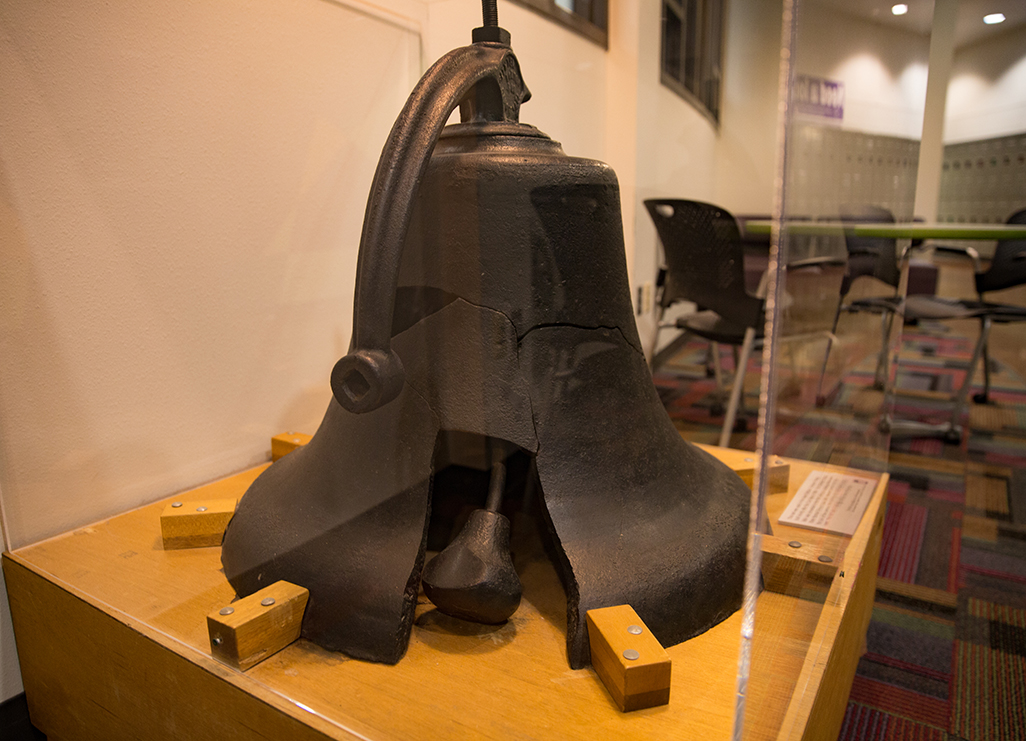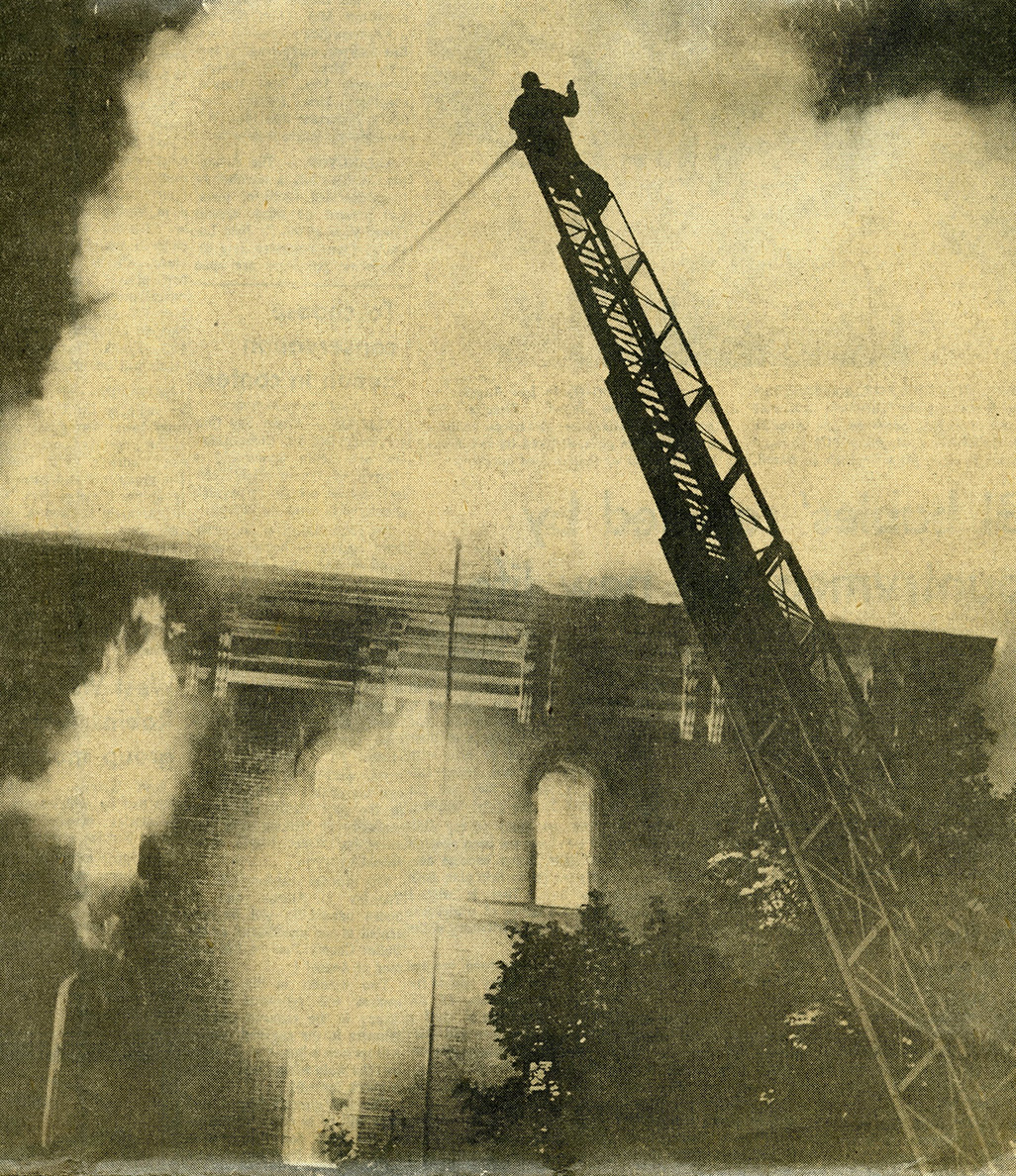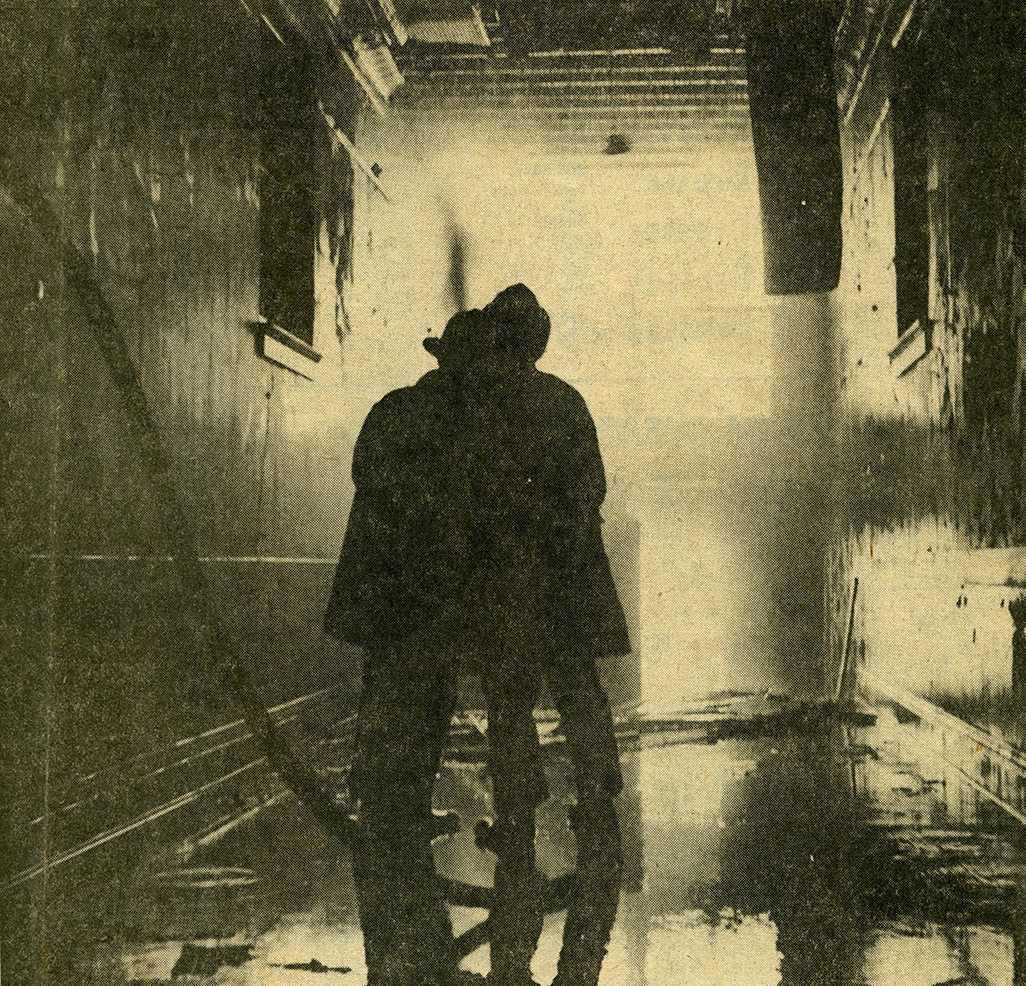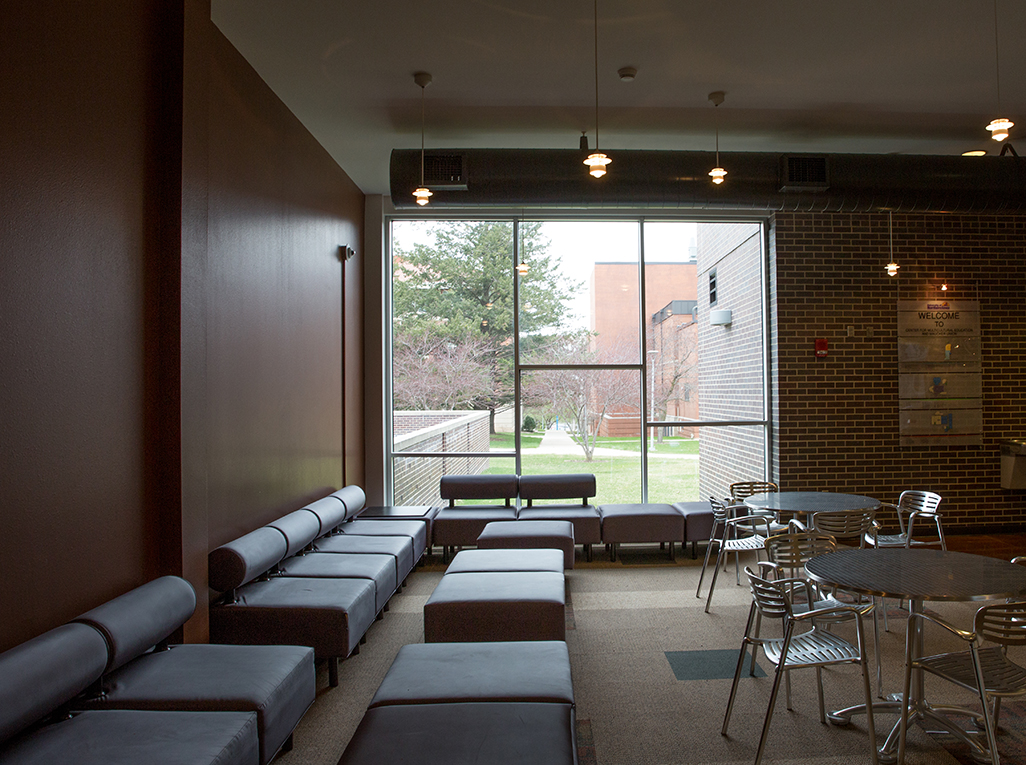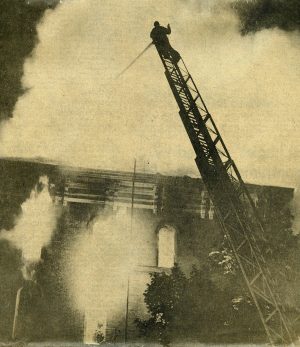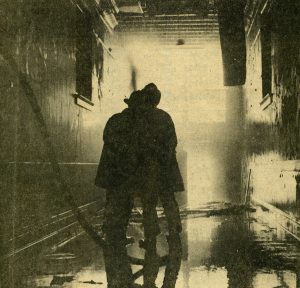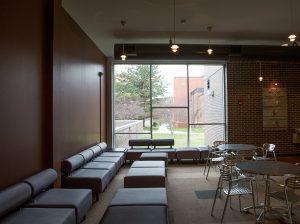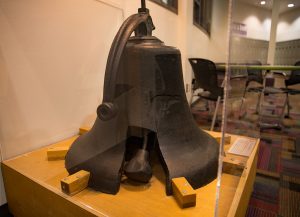From where the bell tolls: the untold story of a UNI artifact
History prof. says 148-year-old artifact should be relocated
Apr 13, 2017
Nestled between a row of gym lockers and an assortment of treadmills lies what is likely to be one of the oldest surviving artifacts from the beginning of UNI.
As they make their way to class, students may not even notice the severely cracked bell situated inside a large glass case outside the Health Beat in the tunnel between the Maucker Union and Lang Hall. However, this bell serves as one of the last physical reminders of UNI’s humble beginnings as a Civil War orphanage.
According to Thomas Connors, an associate professor of history, there was a series of orphanages built around Iowa during the Civil War, led by a woman named Annie Turner Wittenmyer, for whom there is a monument in the circle drive in front of Lang Hall.
“They put [an orphanage] in Cedar Falls in 1865,” Connors said. “The original orphanage was downtown on Main Street. And then in 1869, they built a new building for the orphans. And that was where the bell was hung.”
Connors explained that this new orphanage was located in the space between where Maucker Union and Lang Hall currently occupy and that the bell was part of that original structure. However, the orphanage was only in operation for seven years before it was forced to close in 1876.
“If the war ends in 1865, your supply of orphans gets cut off in 1865 because there’s no more people getting orphaned from the war,” Connors said. “So, by 1876, the youngest orphans would be 11. Most of the orphans will have aged out of the system.”
Connors said that after the orphanage closed, the city fathers of Cedar Falls convinced the state government to convert the newly emptied orphanage into a teaching college — what was then known as a “Normal School.” This effectively marked the birth of UNI, as the former orphanage was later renamed Central Hall.
According to Nathan Arndt, the assistant director and chief curator for the UNI Museum, the bell was originally used as a simple calling bell for the children while the building was still operating as an orphanage. After the orphanage transitioned into the Iowa State Normal School in 1876, the bell served the additional purpose of calling the beginning and ending of the day, up until the installation of the Campanile in 1926.
Arndt said the Central Hall bell was still used after 1926, albeit in a more limited capacity, after the Campanile became the new official sound of UNI.
“It was used for special occasions — if a sports team won a victory [or] to announce skip day,” Arndt said. “Records kind of indicate this wasn’t sanctioned. The bell was locked up, but the students would sneak up into the bell tower and ring it anyway to celebrate.”
The fire
The bell remained in Central Hall until that building was destroyed in a fire in the early morning of July 22, 1965.
“In 1965, actually, one of the newspaper people was walking out and noticed smoke coming out of a window,” Arndt said. “And it burnt to the ground that night due to faulty wiring. They tried to save it, but at the end of it, they had to bulldoze the whole thing down.”
According to an article that appeared in the July 30, 1965 edition of the Northern Iowan (then known as the College Eye), the bell had previously been removed from the Central Hall bell tower and subsequently relocated to the attic of the building some 25 years prior to the fire.
However, despite being safely stored in the attic, the bell did not survive the fire unscathed.
According to the August 20, 1965 edition of the College Eye, the bell sustained a large crack in its side as a result of the fire that engulfed Central Hall. This crack is still visible to this day.
Rediscovery
Following the destruction of Central Hall, records fail to provide a clear history of where the bell moved next. However, according to Arndt, a past statement from Rosemary Beach, former Cedar Falls Historical Society curator, seems to imply that the bell was likely stored in the old Gilchrist Hall before that building burned to the ground in May of 1972.
The bell was then moved into the Campanile at some point, as was reported in an article that appeared in the Oct. 1, 1982 edition of the Northern Iowan. In the article, Bob Byrnes, the then-carilloneur for the Campanile, was quoted, saying, “It’s on the first floor behind the spiral staircase. It has been there for years.”
According to archival documents from the 1983 Centennial Committee Meeting for the 100th anniversary of the Malcolm Price Laboratory School, the bell was mounted and displayed at Price Lab for one year following its re-discovery in the Campanile. In 1984, the following year, the bell was donated to the UNI Museum, where it stayed until 2006.
Where it stands today
According to Arndt, the UNI Museum loaned the bell out to the Maucker Union in 2006 in an effort to make objects from UNI’s history more accessible to students.
“At that point in time, the museum was sitting across Hudson in the old location,” Arndt said. “So, it wasn’t as easily accessible to students, and this was our way of kind of introducing that [history] to students.”
Arndt explained that another reason the bell was moved into its current location is that it now sits approximately underneath its original location in Central Hall. However, Arndt said he thinks the bell still needs more attention than it currently receives.
“That’s part of the reason where it’s at; it’s because that’s the original location of where it sat,” Arndt said. “So, in that sense, I love it…. On the other hand, you’re only letting a certain amount of students see it. So, we have to kind of weigh that back and forth.”
Ellie Akers, junior anthropology major and research assistant at the UNI Museum, echoed this sentiment, saying that the bell should be receiving more attention.
“It’s in a safe location, don’t get me wrong,” Akers said. “But, I think that it’s not getting its proper dues by being there. I mean, you pass by it on your way to Lang or on your way to the Union, but that’s about it. It’s not getting its proper attention that it deserves.”
The bell’s future
Connors has expressed interest in seeing the UNI Museum move the bell to a more prominent location — specifically, directly above where it currently sits.
“So, I think there are two things going on. One, we haven’t marked the place where the university began,” Connors said. “And secondly, this relic of the beginning of the university — this symbol — it’s in a basement, basically. So, what we had talked about … was to landscape that area where it stood and then use the area just inside the multicultural center and the student center.”
Connors said he believes the bell should be moved to the seating area adjacent to the Center for Multicultural Education (CME), where he says the window there directly looks out on the former site of the orphanage and Central Hall.
“I thought that would be a really nice place to put the bell and interpret the orphanage,” Connors said. “That would allow a place to put the bell — a place that is more prominent and not underground. And it would also allow us to interpret and mark the site of the orphanage and maybe put a monument or a plaque.”
According to Akers, although the bell is on loan to Maucker Union, it is still a part of the UNI Museum’s collection. However, she stressed there is a potential for collaboration between the UNI Museum and other departments on campus to possibly relocate the bell and commemorate its history.
“One thing I really like about working at the UNI Museum is that every little thing has something important. It has a story,” Akers said. “And this bell has one of the most interesting stories I’ve ever encountered…. I think that having this kind of backstory uncovered [is] vital for what UNI is and how it came to be.”
Connors said he hopes such a relocation could be completed by 2019, the 150th anniversary of the opening of the Civil War orphanage that would eventually become UNI.


